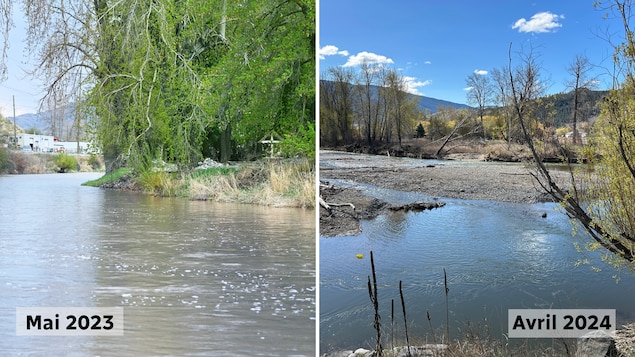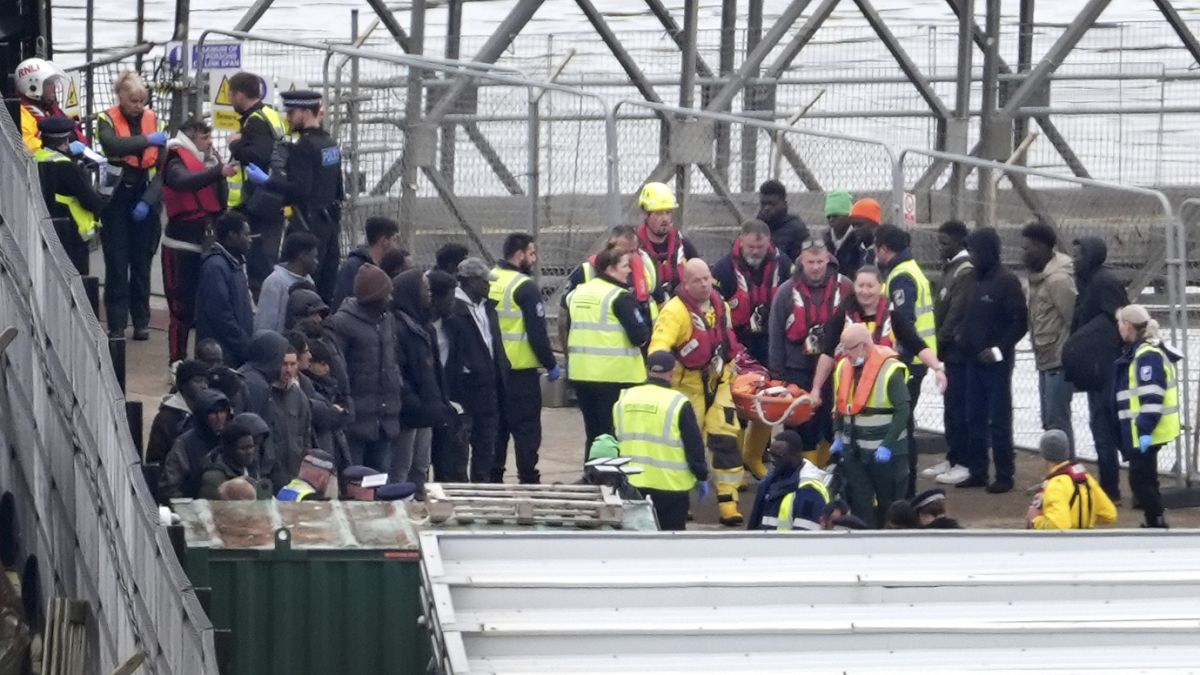Wildfires in Alberta, Canada.
There are already more than 400 open outbreaks at the same time in Canada and more than half of them, 239, are out of control.
Hopes that the weather will change, that it will rain or that the wind will change
May was, worldwide, the second warmest month on record, with Canada at the epicenter: 4 million hectares have already burned this year in that country.
“The days are very dark and cloudy. I have friends in Quebec with eye irritation, and people have put their masks back on. These are heavy days, the air is heavy, our heads hurt, our throats are dry, we cough. The smoke smell is insane. We’re Afraid”, is the day Canadians live by day in and day out.
After a winter with less snow than normal and an exceptionally warm and dry spring, much of Canada has become a breeding ground for fires. Canada is burning and as a result the United States is choking. On Tuesday, New York suffered the worst air quality of any major metropolitan area.So much so that he took the post from the capital of India, New Delhi. “Very unhealthy” values were reached.
The numbers are scary. More than 400 (414) outbreaks opened at the same time and more than half of them (239) are out of control.. In total, more than 20,000 Canadians have been evacuated across the country, while firefighters fight to contain a blaze that has already burned nearly four million hectares, 15 times more than the average for the past decade. Last year 28,000 hectares burned. There is no truce in the provinces of Alberta (west), Nova Scotia (east), Vancouver, or Quebec.
“With the staff we have currently we can cover about 40 fires at the same time,” declared Quebec Premier François Legault, one of the hardest hit regions with more than 160 active sources affecting its critical infrastructure (roads, power lines) and It has forced the evacuation of more than 10,000 people and another 4,000 are scheduled to be evacuated. “We have to focus on the most urgent areas,” he stressed.
The climate crisis is happening here and now.
They suffered from a hell of a fire for several days. Not every firefighter sent to Canada could cope with them. “It really makes me understand that the climate crisis is happening here and now,” said Caroline Brouillette, executive director of the Climate Action Network Canada. WhatWhat’s going on? Why does it take so long to put out fires in Canada?
{{#cards}}
{{#section.link.href}} {{section.link.title}} {{/section.link.href}}
{{title.data}}
{{/ cards}}
Canada fire weather map
There are many reasons. “The weather being recorded in that part of Canada, a May heat wave of 33 degrees, in the whole western half of Canada is Stable weather, sunny, with temperatures above normal. A tropical air mass reaches all of that part of North America, and in those conditions it is difficult to be able to gain an ocean and put out a fire,” explains Jorge Olsena, a geographer from the University of Alicante.
Also, remember that this area – in the areas around the Rocky Mountains – is one of the areas with the highest rates of boreal vegetation, and is therefore a heavily wooded area that is difficult to control.
Miguel Angel Soto, president of the Greenpeace Forest Campaign, agrees, adding that it is in order to bring these fires under control. The solution is “the change of weather conditions, or to rain, or to a change of winds, or to the arrival of fire to a region of lakes.”. “If not, the fire brigades can do little, even though all countries send emergency brigades (now USA, France and Spain), 50% of Canada is forests.”
Sixth generation fires
These fires are called fifth or sixth generation fires. Because, Olcina explained, The new factor is added, which is the arrival of desert air at times of the year that are not usually common. This creates conditions in which fire has its own dynamics. It is hard to control.
The worst thing, experts say, is that this will only get worse. So far this year they have been calcined about 15 times more than in the past decade. “It’s a trend in many parts of the world, in the Northern Hemisphere, and in the tropics as well, but especially in North America or Eurasia. These fires that occur earlier each time, in the months of May or June, and that they find themselves with a very dense forest mass, with warm air in the entire atmospheric column making it difficult to control them.”
The person in charge of the Greenpeace forest campaign recalls that this past year we witnessed in Spain more than 150,000 hectares burned with the hottest summer on record. “By this I mean that we experience frequent and extremes: droughts, heat waves, floods, hurricanes, and heavy rains. This was the driest and hottest spring in history. They are abnormal situations that, due to negligence or electrical storms, turn into uncontrollable fires.”.
The maximum is already normal
Olcina asserts that this is the new reality. “We have been breaking records for hectares burned for years nowfrom fires breaking out across the northern hemisphere, a trend we will have to get used to in this warming context.”
This is confirmed by Soto, who asserts that “in the 1990s, the fires of the future were called and experts said what they would be. The future is here. is present. Everything happens with the acceptance that the real problem is climate change. Experts warn not to make this situation worse. There have always been fires, what we see now is extremism, but extremism has already become normal.”





